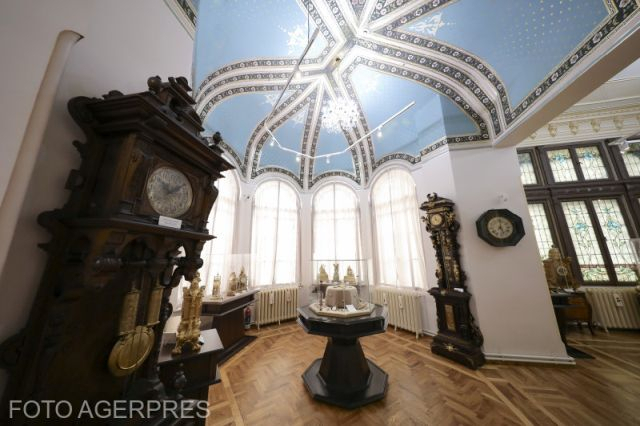The Clock Museum in Ploiești
The city of Ploiești, located 60 kilometers from the capital city, is home to the “Nicolae Simache” Clock Museum, venued in one of the most beautiful buildings in this city. Our guide is curator Carmen Banu:

Ion Puican, 29.03.2021, 12:58
The city of Ploiești, located 60 kilometers from the capital city, is home to the “Nicolae Simache” Clock Museum, venued in one of the most beautiful buildings in this city. Our guide is curator Carmen Banu:
“The Nicolae Simache Clock Museum in Ploiești was founded in 1963 by professor emeritus Nicolae Simache, who at the time was the director of the Ploiești Regional Museum of History. Simache at the time founded 18 museum sections, including the Clock Museum, which apparently was the closest to his heart. Its an architectural jewel, a building built in late 19th century for the Prahova Prefect, Luca Elefterescu, the head of the Conservative Party at the time, a magistrate and oil magnate. Its one of the most beautiful buildings in the southern part of the city, a residential area built in neo-Romantic style”.
Carmen Banu also told us more about the collections of the museum and its beginnings.
“The Clock Museum in Ploiești has an extremely valuable collection. The items were purchased starting 1954. In 1955, the first clocks were purchased, manufactured in Germany and used in households in Transylvania. The collection was enriched with the purchase of 55 clocks from the collection of the famous Bucharest-based clockmaker, SebasianSașa. Hence the idea of founding the Clock Museum in Ploiești. A great number of clocks were purchased over the years, the collection now totaling 4,000 exhibits and the temporary exhibition has 500 items, the most representative in the collection, of course. The exhibition also presents an evolution of keeping time, from sundials, hourglasses, water clocks to wristwatches designed in the first half of the 20th century. Our collection also has a number of valuable items, clocks manufactured in Renaissance style in mid-16th century in France or Germany. The oldest of these is a clock designed in Blois in 1544 by Jakob Acustodia, a famous clockmaker. Its one of the heavyweights of the collection, even though its not the most important. Another valuable item is a limited-series clock created in 1562 by Jeremias Metzker, a famous German clockmaker – only three clocks are known to date in the world, and the one exhibited at the Clock Museum seems to be the oldest”.
About the exhibits in the first hall of the museum, Carmen Banu told us:
“As a novelty, here the collection displays time-keeping mechanisms and one item is of particular importance: this water clock, as apparently theres no other such object in similar collections. Lantern clocks were designed in England in the 17th century and due to their success, they were manufactured up until the 19th century. Our collection also contains two such clocks, their name owing to their resemblance to the lantern clocks of the time”.
Carmen Banu then went on to describe the second exhibition hall.
“The second hall is devoted to clocks manufactured in the 18th century and early 19th century. Here, of course, the most notable items stand out through their size, but also through their beauty, such as the large grandfather clocks dating back to the 19th century. Pocket watches are also interesting in this part of the collection, designed starting with the 18th century and up until the 19th century by English, French or Swiss clockmakers. The Clock Museums collection can rival any other museum in Germany, Switzerland or the United States. The famous clockmaker Abraham Louis Breguet designed clocks especially for Turkey and the Topkapı Museum also hosts some of his creations. He is considered the greatest clockmaker of all times, and our collections also exhibit some of his creations”.
The tour continues with the third hall exhibiting pocket watches that belonged to great historical figures.
“Jewel or pocket watches are exhibited in the third hall, dating back to the 19th and 20th centuries. Apart from their technical quality, they are particularly beautiful through the accuracy of their ornaments. The watches belonged to great Romanian cultural and political figures. I would start with the watches of King Charles I – two of his watches are stored in our collection, as well as other donations, including a watch donated by a Romanian woman settled in Switzerland. The watch had belonged to Tsar Alexander II of Russia, and in 1992 the lady donated it to our museum. The pocket watch collection also exhibits the watch that belonged to diplomat Nicolae Titulescu, a 1931 LeCoultre watch, and the famous Reverso model designed by the same firm”. (V.P.)





























